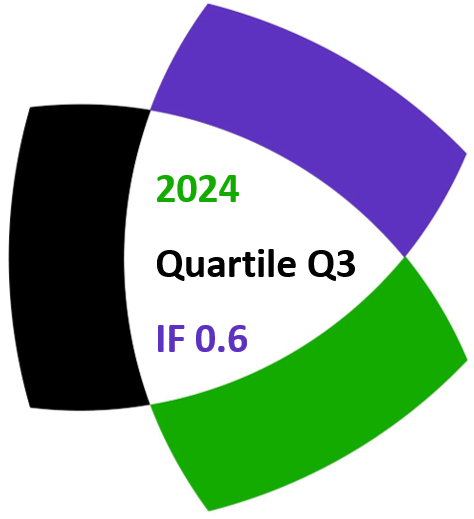Brad Emmons and Xiao Xiao
Notes on Number Theory and Discrete Mathematics
Print ISSN 1310–5132, Online ISSN 2367–8275
Volume 30, 2024, Number 2, Pages 357–382
DOI: 10.7546/nntdm.2024.30.2.357-382
Full paper (PDF, 315 Kb)
Details
Authors and affiliations
Brad Emmons ![]()
![]()
Department of Mathematics, Utica University
1600 Burrstone Road, Utica NY 13502, USA
Xiao Xiao ![]()
![]()
Department of Mathematics, Utica University
1600 Burrstone Road, Utica NY 13502, USA
Abstract
The arithmetic derivative is a function from the natural numbers to itself that sends all prime numbers to ![]() and satisfies the Leibniz rule. The arithmetic partial derivative with respect to a prime
and satisfies the Leibniz rule. The arithmetic partial derivative with respect to a prime ![]() is the
is the ![]() -th component of the arithmetic derivative. In this paper, we generalize the arithmetic partial derivative to
-th component of the arithmetic derivative. In this paper, we generalize the arithmetic partial derivative to ![]() -adic fields (the local case) and the arithmetic derivative to number fields (the global case). We study the dynamical system of the
-adic fields (the local case) and the arithmetic derivative to number fields (the global case). We study the dynamical system of the ![]() -adic valuation of the iterations of the arithmetic partial derivatives. We also prove that for every integer
-adic valuation of the iterations of the arithmetic partial derivatives. We also prove that for every integer ![]() , there are infinitely many elements with exactly
, there are infinitely many elements with exactly ![]() anti-partial derivatives. In the end, we study the
anti-partial derivatives. In the end, we study the ![]() -adic continuity of arithmetic derivatives.
-adic continuity of arithmetic derivatives.
Keywords
- Arithmetic derivative
- Arithmetic partial derivative
- Arithmetic subderivative
- p-adic fields
- Number fields
- p-adic continuity
2020 Mathematics Subject Classification
- 11A25
- 11R04
References
- Barbeau, E. J. (1961). Remarks on an arithmetic derivative. Canadian Mathematical Bulletin, 4(2), 117–122.
- Emmons, B., & Xiao, X. (2022). The arithmetic partial derivative. Journal of Integer Sequences, 25, Article 22.4.7.
- Gleason, A. M., Greenwood, R. E., & Kelly, L. M. (1980). The William Lowell Putnam Mathematical Competition – Problems and Solutions: 1938-1964. Mathematical Association of America.
- Haukkanen, P., Mattila, M., Merikoski, J. K., & Tossavainen, T. (2013). Can the arithmetic derivative be defined on a non-unique factorization domain? Journal of Integer Sequences, 16, Article 13.1.2.
- Haukkanen, P., Merikoski, J. K., & Tossavainen, T. (2019). Arithmetic subderivatives and Leibniz-additive functions. Annales Mathematicae et Informaticae, 50, 145–157.
- Haukkanen, P., Merikoski, J. K., & Tossavainen, T. (2019). Arithmetic subderivatives: Discontinuity and continuity. Journal of Integer Sequences, 22, Article 19.7.4.
- Haukkanen, P., Merikoski, J. K., & Tossavainen, T. (2020). Arithmetic subderivatives: p-adic discontinuity and continuity. Journal of Integer Sequences, 23, Article 20.7.3.
- Kluempen, F. L., & Reboli, D. M. (2004). When are two subgroups of the rationals isomorphic? Mathematics Magazine, 77(5), 374–379.
- Kovic, J. (2012). The arithmetic derivative and antiderivative. Journal of Integer Sequences, 15, Article 12.3.8.
- Mistri, R. K., & Pandey, R. K. (2014). Derivative of an ideal in a number ring. Integers, 14, A24.
- Pasten, H. (2022). Arithmetic derivatives through geometry of numbers. Canadian Mathematical Bulletin, 65(4), 906–923.
- Robert, A. M. (2000). A Course in p-adic Analysis (1st ed.). Graduate Texts in Mathematics, vol. 198. Springer-Verlag, New York.
- Serre, J.-P. (1979). Local Fields (1st ed.). Graduate Texts in Mathematics, vol. 67,
Springer-Verlag, New York. - Shelly, D. J. M. (1911). Una cuestión de la teoria de los numeros. Asociación Española, Granada, pp. 1–12 (Spanish).
- Ufnarovski, V., & Åhlander, B. (2003). How to differentiate a number. Journal of Integer Sequences, 6, Article 03.3.4.
Manuscript history
- Received: 20 October 2023
- Accepted: 10 May 2024
- Online First: 27 May 2024
Copyright information
![]() Ⓒ 2024 by the Authors.
Ⓒ 2024 by the Authors.
This is an Open Access paper distributed under the terms and conditions of the Creative Commons Attribution 4.0 International License (CC BY 4.0).
Related papers
Cite this paper
Emmons, B., & Xiao, X. (2024). A generalization of arithmetic derivative to p-adic fields and number fields. Notes on Number Theory and Discrete Mathematics, 30(2), 357-382, DOI: 10.7546/nntdm.2024.30.2.357-382.


